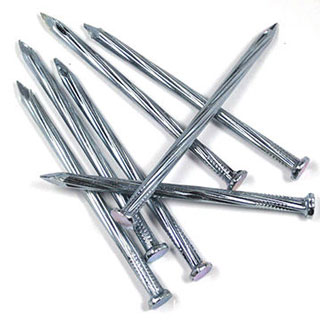Project Report For Nail Manufacturing
Introduction
Project report for Nail Manufacturing is as follows.
A nail is a metal rod or shank with a formed head on one end and a pointed end that may be pounded into pieces of wood or other materials to attach them together.
Nails are typically composed of steel, although they can also be made of aluminium, brass, or a variety of other metals. To improve corrosion resistance, gripping strength, or ornamental look, the surface might be coated or plated.
Project Report Sample On
Nail Manufacturing
Get Completely Custom Bankable Project Report
Between 20,000 and 30,000 nails of various types and sizes are used in ordinary wood-frame buildings.
The penny is the unit used to measure the length of a nail. This term originated in the late 1700s in England, when it referred to the cost of one hundred nails of that size. A “ten penny nail,” for example, would have cost ten pence per hundred.
The penny is represented by the letter “d,” as in 10d. This classification is thought to date back to the Roman Empire when a similar method of measuring hand-forged nails used the denarius, a typical Roman currency

The term penny now solely refers to the length of a nail and has no bearing on the pricing. 2d is the shortest nail, at 1 inch (2.5 cm) in length.
A 10d nail measures 3 inches (7.6 cm) in length, whereas a 16d nail measures 3.5 inches (8.9 cm). Each penny designation increases the nail length by 0.25 inches (0.64 cm) between 2d and 10d. The lengths and designations do not logically progress beyond 10d.
Market Potential Of Nail Manufacturing
Nails are made from aluminium, brass, copper, and other metal wires using wire nail producing machinery.
Roundhead nails, pop nails, flathead nails, counter shank head nails, and lost head nails can all be produced using these devices. Auxiliary components are generally used with nail-making machines to ensure the highest level of precision.
Furthermore, developing-country governments are expanding their investments in infrastructure development. For example, the Indian government has planned a US$750 billion investment in railway infrastructure from 2018 to 2030.
To meet the changing needs of the carpentry, metalworking, and construction industries, major producers of wire nail producing machines are investing in technical progress and product innovation. Machine automation allows for the mass manufacture of wire nails with little or no human interaction.
Automatic machines also have a strong transmission system and an automatic lubrication system, making them more user-friendly and cost-effective. Many manufacturers are investing in expanding their manufacturing capacity as the demand for nails grows.
